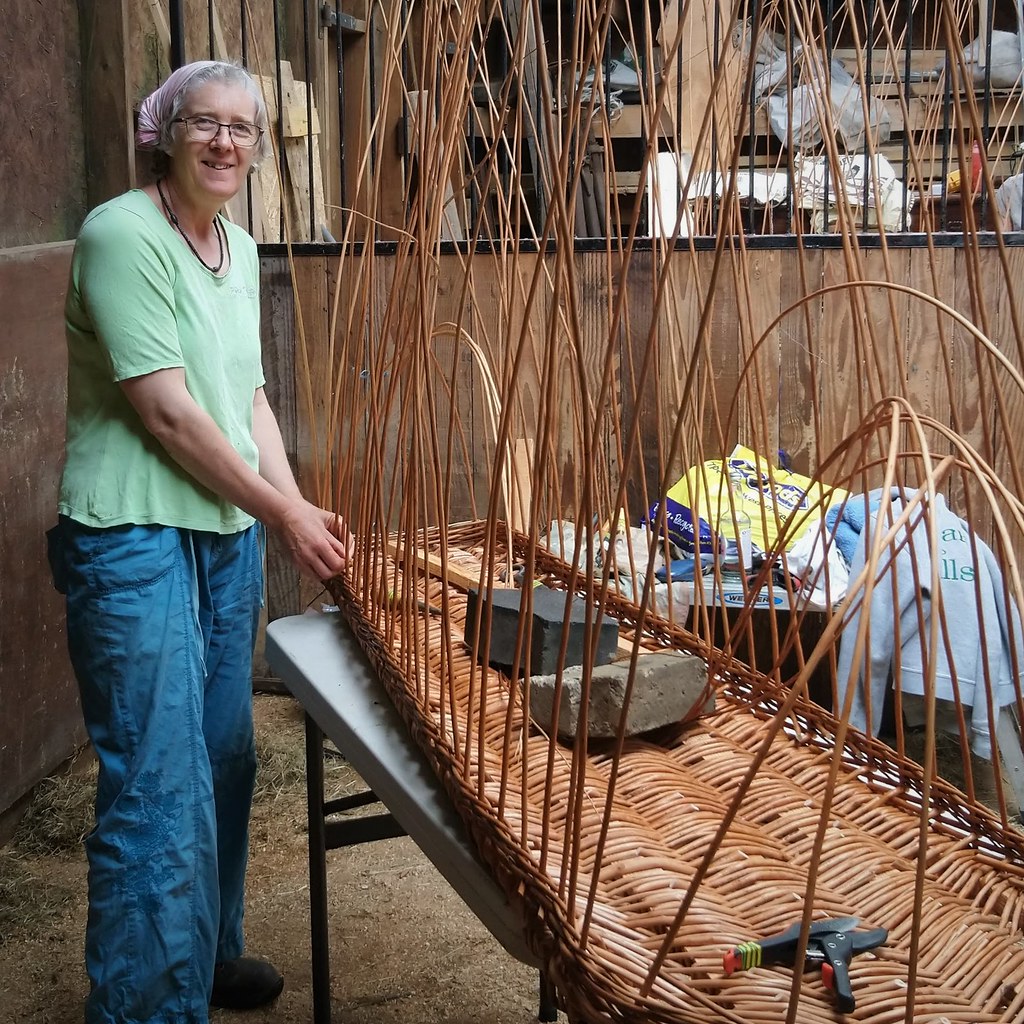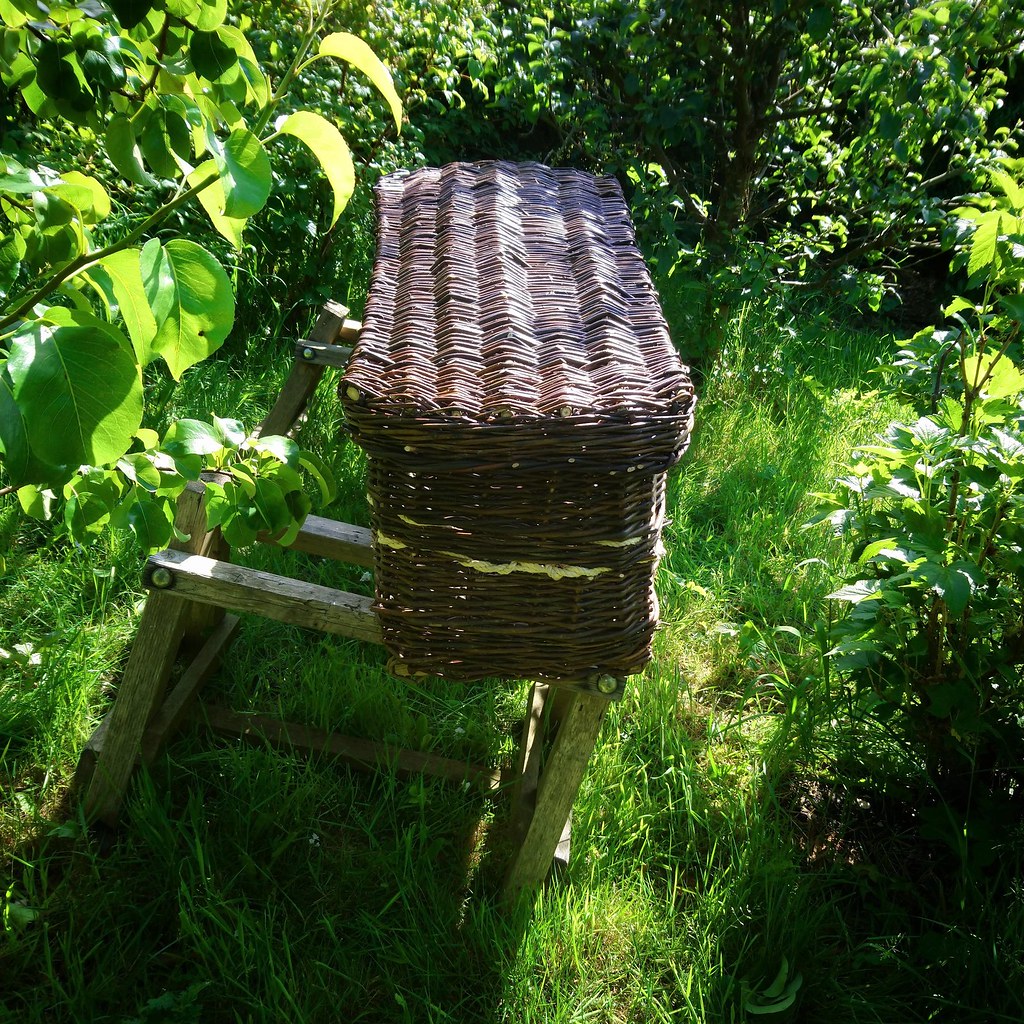by Ruth Thompson
 Lockdown raised some interesting challenges for me. For starters, as I imagine has been the case for thousands of self-employed people or small businesses, I had several projects in the pipeline that were either cancelled or put on indefinite hold. Add to this the fact that going out to harvest willow was no longer an option, and suddenly the weaving business starts looking very shaky.
Lockdown raised some interesting challenges for me. For starters, as I imagine has been the case for thousands of self-employed people or small businesses, I had several projects in the pipeline that were either cancelled or put on indefinite hold. Add to this the fact that going out to harvest willow was no longer an option, and suddenly the weaving business starts looking very shaky.
Prior to the virus I had signed up with Karen Collins to attend a course to learn willow coffin weaving, but naturally that was also postponed.
Undaunted, I contacted her to ask if she would be willing to offer private tuition over the phone! After all it’s not that far removed from basketry techniques - is it? Anyway, she agreed and so began the adventure. Armed with some stock willow, wooden laths, tools and a mobile phone I ventured forth on weaving coffin number one.
Developing this new skill benefited from three main factors coming together:
- I knew the basic technique or pattern already
- I had a very patient ‘end of the phone tutor’ in Karen
- Plenty of time for those good old twin flames - ‘trial and error’ and ‘practice makes perfect’!
To begin with the base is made; this must be strong enough to support the body weight. A group of five wooden slats with rounded edges are arranged in a tight fan shape. This configuration and shape is maintained by clamping both ends of the group with wooden clamps, thereby defining the form of the base. The weaving between the slats can then proceed. Each coffin and its lid are lined with calico fabric.
Why choose a willow coffin?
 I imagine people are attracted to the notion of willow coffins for a number of different reasons. My intention is to create a high-quality product that offers the following features and benefits:
I imagine people are attracted to the notion of willow coffins for a number of different reasons. My intention is to create a high-quality product that offers the following features and benefits:
- They are attractive and eye-catching, but also from a practical perspective they are also very sturdy, incorporating three strong sisal rope handles on either side for lifting and use by pall-bearers.
- Wooden skids on the underside of the base protect any surfaces that the coffin might rest upon.
- A relatively low environmental impact involved in making them, along with an increased awareness of ecological concerns.
People might ask if my coffins are made from sustainable materials, locally grown where possible? The answer is 'yes'. I'm planning to have different options on my website, but also offer a one-to-one consultation with myself or a colleague to ensure people get exactly what they need.
For example, a polished hard wood dedication plate can be made with a laser engraved personalised message that is fastened to the lid, but also detachable to retain as a keep-sake if desired.
I am finding this to be a fulfilling and inspiring addition to my range of work. We have recently sold a prototype coffin which will be used as a storage chest for blankets. There's also been interest from a local funeral director and a flower grower.
There is satisfaction in knowing that time, care and consideration has been applied by a craftsperson whom you've worked with to create a beautiful resting place for someone you loved.
Find out more about Ruth's work on the Sylvan Skills website.